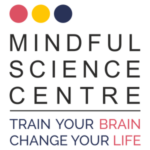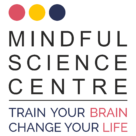
When a 4th grader reports that she felt she “was going to die” from test anxiety, she’s telling the truth. The responses of her autonomic nervous system are the same whether she’s taking a math test or sensing actual physical danger. – Mindful Schools
Explaining how mindfulness and the brain works can seem a daunting task, yet it can be one of the best ways to show how mindfulness works for us and how it helps our brain to function properly.
I explain this so often to adults that when I came across this article on how to explain it to children I thought I must share. The original post can be found here.
If you are in a hurry, you can scroll down to the big infographic.
So what is mindfulness? Mindfulness occurs when we pay attention to what is happening in the here and now. We observe our emotions, our thoughts, our surroundings, in an even-minded, nonjudgmental way. We apply this same focus of attention to situations both good and bad. This is being mindful.
Learning to be mindful of what’s happening in the moment helps children make sound decisions rather than be ruled by their emotions.
Negative emotions can be tough for anyone to deal with. Fear and anger can hit us unexpectedly and when we do not have a prior plan for dealing with these feelings, we can be thrown off balance and react badly.
Here’s what science has to say about it.
An impulsive reaction, triggered by emotions like fear or anger, rises up from the amygdala and hippocampus—the most ancient parts of our brain. These parts evolved to respond with defensive action to threatening situations.
If we can delay this reactivity, the newer pre-frontal cortex of the brain can respond from a place of reflection and thoughtfulness. The PFC (pre-frontal cortex) is associated with maturity, including regulating emotions and behaviors and making wise decisions.
Mindfulness practice, as you may have guessed, diminishes the reactivity from the amygdala and strengthens the pre-frontal cortex.1
The growing brain and mindfulness
Author and anger management clinic director Dr. Ronald Potter-Efron explains that the newest parts of our brain—and the last parts to develop as we grow—likely evolved in response to an increased propensity to live in groups. “As we have learned to live together collectively, the human brain has been spurred to grow accordingly.”2
A lot of growth is taking place in the adolescent brain, and this growth is happening at the same time that the brain is reorganizing itself.
“Part of this reorganization process,” says neurobiologist Dr. Arlene Montgomery, “includes the pruning of disused neural connections. This growth and pruning are affected by environmental experiences and reshape the adolescent brain.”3
This is one of the reasons mindfulness in childhood and adolescence can be so effective: the pathways that foster empathy and impulse control are being used and strengthened, which will serve the child throughout his or her life.
Mindfulness and the brain
The amygdala determines emotional responses by classifying sensory input as either pleasurable or threatening. Input seen as threatening is blocked by the amygdala, prompting an immediate reflexive reaction: fight, flight, or freeze.4
The amygadala does not see a difference between perceived threats and actual dangers. It often triggers “false alarms” and potentially problematic reactive behavior. We sometimes freeze in stressful situations, like public speaking or when taking a test. Though neither of these activities are life-threatening, we disconnect from rational thinking and become impulsive and reactive.
Even if we have conflict resolution skills stored in memory, we might not be able to access them due to the stress response, as the amygdala hinders access to memory recall and storage.
When we have the time to consciously process sensory input, we allow the prefrontal cortex to analyze the information. Instead of an immediate, impulsive reaction, we get to choose the best response instead.
Practicing mindfulness calms the amygdala and reconnects us to our calm, clear prefrontal cortex, so that we can make thoughtful choices for how to respond. Mindfulness helps us regain access to our executive functions: the intention to pay attention, emotional regulation, body regulation, empathy, self-calm, and communications skills—even when under stress arousal.
Mindful thinking happens when the prefrontal cortex can process the information. Following your breath or counting to ten when you’re angry or sad gives time for the amygdala to allow the information to flow to the prefrontal cortex to be properly analyzed.
Mindful Schools reports that research has found improvements in anxiety, cognitive functioning and self regulation among children trained in mindfulness, suggesting that the corresponding parts of the brain may be changing as well.
A basic mindfulness exercise is to teach children to focus on breathing. Being able to control their breathing can help them become less reactive when stressed. Focused breathing helps calm the body by slowing the heart rate, lowering blood pressure, and improving focus. Controlled breathing can override the fight, flight, or freeze response set off by the amygdala, and instead enable mindful behavior.
My two-year-old son has learned to control his breath and to focus on his breath when he is frustrated—to my great astonishment. He is often able to calm himself when something doesn’t go his way and he gets agitated. He even reminds me to calm down when I’m anxious. He says “Daddy” and does a long inhale and a longer exhale. It’s pretty amazing. I started teaching him mindfulness with this simple breath exercise.
in mindfulness
Join 12 Week – Mindfulness Foundation Trainer Program – CFA Accredited and CDP Certified
 Mindful Science Centre is mindfulness and emotional intelligence based training and learning centre providing leadership and performance solutions for corporates and organizations. Mindful Science Centre applies practices based on self-awareness and social emotional intelligence that cultivate leadership qualities such as attention, resilience, focus, empathy, compassion, communication and clarity.
Mindful Science Centre is mindfulness and emotional intelligence based training and learning centre providing leadership and performance solutions for corporates and organizations. Mindful Science Centre applies practices based on self-awareness and social emotional intelligence that cultivate leadership qualities such as attention, resilience, focus, empathy, compassion, communication and clarity.
Well-designed Mindfulness training programs and one-on-one coaching sessions support individuals and organisations to develop a positive outlook, decision-making, agility, creativity, concentration, sustainability, mental and physical well-being through mindfulness and Emotional Intelligence practices. Contact Mindful Science Centre to learn more about how to become Successful leader Web: www.mindfulsciencecentre.com. Mail: [email protected]


